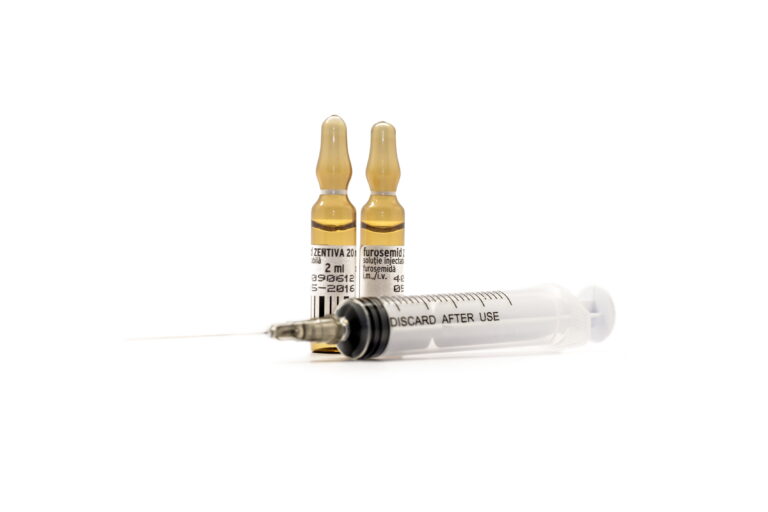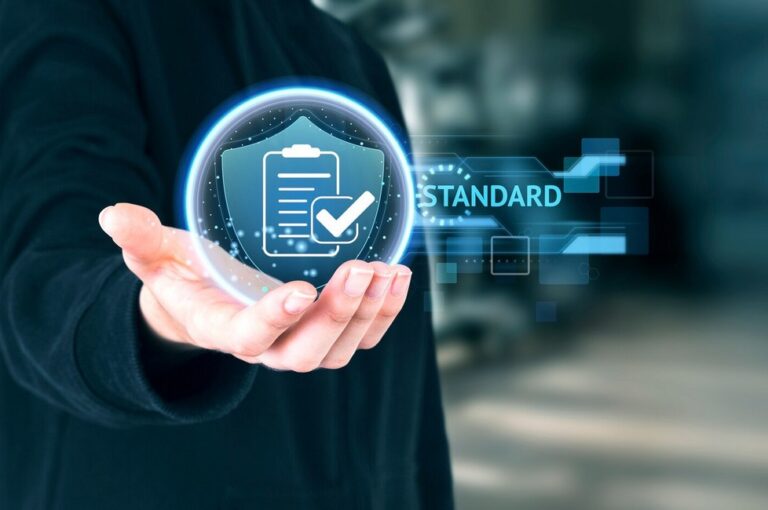Your Guide to Global Regulatory Success Starts Here.
Mastering FDA, EMA, and PMDA submissions with a strategic, proactive, and globally-minded approach.
The definitive guide for life science professionals on transforming regulatory challenges into a strategic advantage for market access.
Partnering with a specialized team is not an expense but an investment. Our expertise in life science translation services ensures your submissions are accurate, certified, and compliant, accelerating your path to market.
The EMA linguistic review process for SmPC and labels is a monumental task. We ensure your product information is not only accurate but harmonized and approved for all 24 EU languages.
Your core dossier is your blueprint for global success. We help you identify the universal scientific data that forms the «golden thread» of every successful submission.
Eliminate Regulatory Risk: Secure Your Approval in the U.S., Europe, and Japan.
The journey of bringing a new drug or medical device to market is a formidable quest, filled with scientific rigor, clinical trials, and, most critically, a labyrinth of regulatory hurdles. For life science translation services and professionals, the challenge is no longer a simple, linear path. It is a complex, global endeavor that demands an acute understanding of the rules of engagement set by the world’s most powerful regulatory bodies. With each major market—from the United States to Europe and Japan—governed by its own unique set of regulations, the aspiration of simultaneous global submission can feel like an impossible dream. This is where a strategic approach is not just a convenience, but a fundamental necessity.
This article serves as your «Regulatory Compass», a comprehensive guide to navigating the intricate and often intimidating world of global medical device regulations and pharmaceutical regulatory agencies. We will move beyond a reactive, market-by-market mindset and show you how to build a proactive, globally-minded strategy. By understanding the core requirements of key agencies—the FDA, EMA, and PMDA—and mastering the critical role of professional translation services, you can chart a more efficient and successful course to global approval. For deeper insight, see our comprehensive guide to professional translation services.
The Pillars of Global Regulation: FDA, EMA, PMDA.
At the heart of the global life sciences industry are three powerful regulatory bodies that shape market access for a majority of new products. While their missions share the common goal of protecting public health, their mandates, structures, and approaches to reviewing applications are distinctly different. Understanding these differences is the first step in building a successful global strategy.
The FDA: The Detailed Investigator.
The U.S. Food and Drug Administration (FDA) is perhaps the most well-known regulatory agency in the world, renowned for its meticulous, data-driven, and highly prescriptive review process. Its primary mission is to protect public health by ensuring the safety, efficacy, and security of human and veterinary drugs, biological products, and medical devices. The FDA’s authority stems from a series of legislative acts, most notably the Federal Food, Drug, and Cosmetic Act (FD&C Act). The agency operates with a high degree of autonomy, and its investigators are known for their detailed inspections and rigorous questioning during the review process.
- Geographic Scope: The United States and its territories.
- Key Mandates: The FD&C Act and the Public Health Service Act.
- Focus: The FDA values massive datasets and statistical rigor, and it maintains a prescriptive list of submission requirements, particularly for pharmaceuticals, where the Electronic Common Technical Document (eCTD) is the mandated format for most submissions.
The EMA: The Consensus Builder.
The European Medicines Agency (EMA) plays a central role in the European Union (EU) and the European Economic Area (EEA). Unlike the FDA, which is a single national authority, the EMA is a decentralized agency that works in a collaborative network with the national regulatory authorities (NRAs) of all 27 EU member states. This collaborative model means that a single approval often requires a consensus-building approach, as each NRA has the right to provide input and raise objections during the review.
- Geographic Scope: The European Union (27 member states) and the European Economic Area (EEA) countries (Iceland, Liechtenstein, and Norway).
- Key Mandates: EU regulations and directives, such as the Medical Device Regulation (MDR) and In Vitro Diagnostic Regulation (IVDR).
- Focus: The EMA emphasizes harmonization and requires a unified approach across a diverse set of countries. This involves a complex EMA linguistic review process for SmPC (Summary of Product Characteristics) and other patient information that must be translated and harmonized across all official EU languages.
The PMDA: The Hands-On Partner.
The Pharmaceuticals and Medical Devices Agency (PMDA) in Japan is a unique entity known for its hands-on approach and collaborative spirit. The agency often engages in extensive pre-submission consultations with applicants, seeking to build a strong partnership to ensure product safety and efficacy. This proactive engagement is a key component of a successful PMDA consulting strategy and is often a prerequisite for a smooth review process.
- Geographic Scope: Japan.
- Key Mandates: The Pharmaceuticals and Medical Devices Act (PMD Act).
- Focus: The PMDA values a high level of detail and preparation, with a particular focus on the unique needs of the Japanese population. This often necessitates «bridging studies» to demonstrate a product’s efficacy and safety in the Japanese context. The PMDA is also known for its meticulous document formatting requirements, which can include the use of specific project management tools like Gantt charts.
Decoding FDA Translation Requirements: More Than Just English.
While the notion that all FDA submissions must be in English is largely true, the assumption that translation isn’t a significant concern for foreign companies is a dangerous misconception. FDA translation requirements are highly specific and often overlooked, leading to significant and costly delays in the review process. The FDA is an agency of certified translation for FDA submission, meaning documents from foreign sources must be accompanied by accurate and validated English translations. This is a critical and non-negotiable point that life science companies must understand and plan for from the outset.
The FDA’s guidance on this matter is rooted in ensuring that all data submitted is complete, verifiable, and understandable to its reviewers. A failure to provide accurate and certified translations can lead to an application being put on clinical hold or even rejected outright.
What Needs Translation for the FDA?
The list of documents requiring translation for FDA submission is more extensive than many anticipate. It’s not just a few patient forms; it’s about ensuring the integrity of all data submitted. The following are key «translation hotspots» that require meticulous attention:
- Informed Consent Forms (ICFs): If clinical trials were conducted in non-English speaking countries, the original language ICFs and their English translations are required. This ensures that the FDA can verify that all subjects fully understood the risks and benefits of the study they participated in.
- Patient-Reported Outcome (PRO) Measures: Data collected directly from patients in a foreign language must be translated to be understood by FDA reviewers. The accuracy of these translations is paramount to the validity of the study’s findings and can be a point of significant scrutiny.
- Foreign Clinical Data: Any clinical data submitted from studies conducted outside the U.S. that was originally in a foreign language must be translated into English. This includes clinical study reports, investigator brochures, and safety data. The FDA translation requirements for clinical data are particularly stringent, as the safety and efficacy of the product are at stake.
- Regulatory Documents: Certificates from a foreign government, licenses, manufacturing documents, and other official regulatory correspondence from non-U.S. authorities must be translated.
- Labels and Labeling: For products marketed globally, foreign language labels must be submitted with their English translations to demonstrate compliance with a foreign authority, even if they are not intended for the U.S. market.
The Importance of Certified Translations.
The FDA’s guidance on translation often requires a statement of certification from the translator or the translation company. This certification affirms that the translation is a complete and accurate representation of the original document. This is a critical component of life science translation services for regulatory documents. A certified translation provides a layer of legal and technical assurance that the translated content is reliable and has been prepared with due diligence.
Choosing the right partner for professional translation services for clinical trials and other regulatory documents is not a matter of convenience; it’s a strategic decision. A single mistranslated word, particularly in a safety-critical document, can lead to a reviewer’s query, a request for re-submission, or even a full rejection. For example, a minor error in the translation of a medical device technical file translation can result in a lengthy delay in the 510(k) or PMA review process, as the FDA may question the fundamental safety and effectiveness of the device. For a more detailed overview, see our guide to life science translation services.
The EMA Submission Process: A Linguistic Labyrinth.
Navigating the EMA submission process, particularly through its Centralized Procedure, is a masterclass in regulatory harmonization. While the core scientific review is conducted in English, the final hurdle for market authorization is the EMA submission translation into all official EU languages. This is a monumental task that requires a high degree of precision and coordination, as it involves the translation of product information into up to 24 languages.
The Centralized Procedure grants a single marketing authorization valid across all EU member states. The benefit is clear: one application, one approval. The challenge, however, is the EMA linguistic review process for SmPC, which ensures that the Summary of Product Characteristics (SmPC), labeling, and Package Leaflet (PL) are identical in all languages, with each national regulatory authority conducting its own review. This is not a formality; it is a rigorous review to ensure clarity, consistency, and compliance for every citizen of the EU. The process is a key component of the EMA’s mandate to protect public health across a diverse, multilingual market.
The Role of the Reference Member State (RMS).
In some EMA procedures, such as the Decentralised Procedure (DCP) or Mutual Recognition Procedure (MRP), a single member state acts as the Reference Member State (RMS). The RMS evaluates the application and drafts the assessment report, which is then sent to other Concerned Member States (CMSs) for approval. This process requires a highly skilled regulatory translation services partner who can manage the flow of documents and ensure consistency across all languages. The complexities of this process are a major contributor to the cost of regulatory translation services. However, the investment in high-quality translation is minimal compared to the cost of a delayed launch or a rejection due to linguistic inconsistencies. The «Regulatory Compass» approach advises companies to view this as a strategic investment that enables faster market access and reduces overall risk.
The Centralized Dossier Advantage.

How a single, core file streamlines every submission to every market.
Avoid costly duplication of efforts by building a single, comprehensive dossier. It’s the «golden thread» that ensures your data is consistent worldwide.
We help you identify the «branching points,» where each agency’s unique administrative and linguistic requirements diverge from the core file.
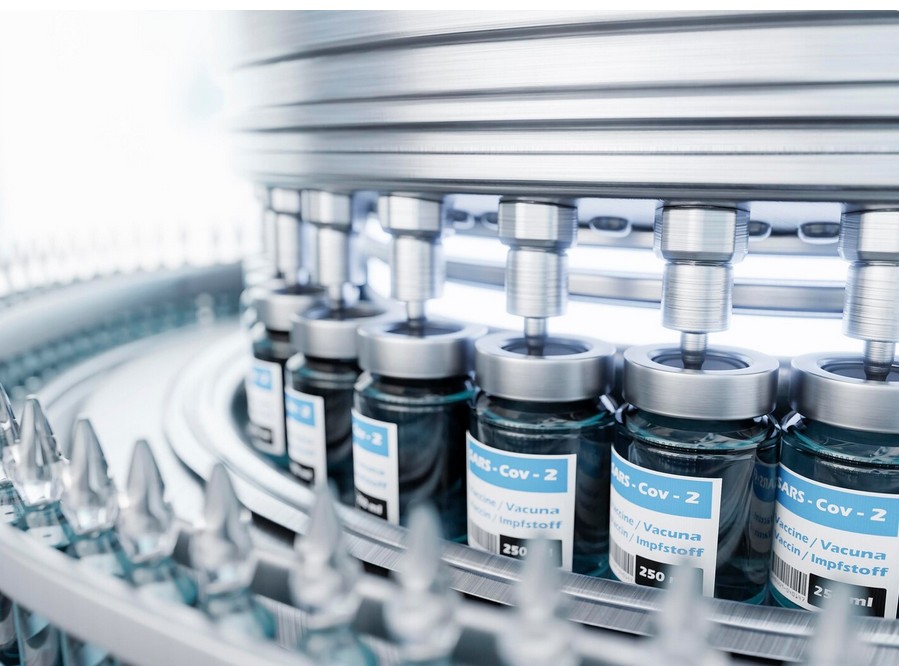
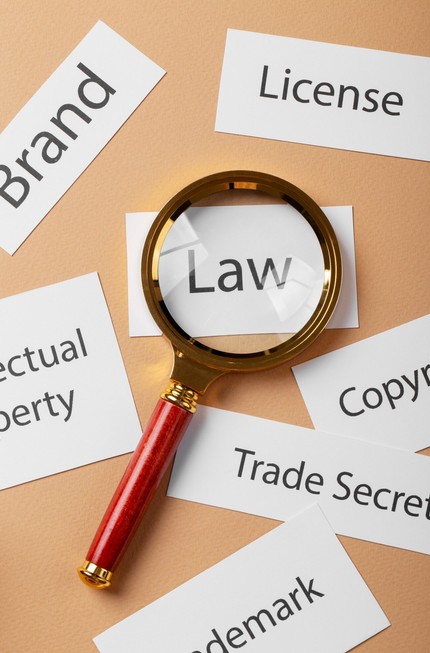
Your Path to Simultaneous Global Submission Starts with One File.
Our experts manage the complexity of each dossier, from medical device technical file translation to eCTD submissions, so you can focus on science.
Charting the Course: Global Medical Device Regulations vs. Pharmaceuticals.
The regulatory pathways for drugs and medical devices, while both under the purview of these agencies, are fundamentally different. Understanding these differences is crucial for any company seeking simultaneous global submission.
The Pharmaceutical Path: The Common Technical Dossier.
For pharmaceuticals, the eCTD submission requirements for FDA and other agencies have created a standardized format for applications. The Common Technical Document (CTD) and its electronic version, the eCTD, are internationally accepted formats for organizing regulatory applications. This structure, which is divided into five modules, has helped to harmonize global submissions.
- Module 1: Region-specific administrative information (e.g., application forms, country-level requirements).
- Module 2: Summaries (e.g., quality overall summary, nonclinical and clinical summaries).
- Module 3: Quality (Chemistry, Manufacturing, and Controls – CMC).
- Module 4: Nonclinical study reports (e.g., toxicology).
- Module 5: Clinical study reports (e.g., clinical trial data).
While the format is standardized, the regional requirements within Module 1 and the specific data expectations in Modules 4 and 5 can differ significantly. This is where a company’s strategy for professional translation services becomes critical. For instance, the FDA translation requirements for clinical data may differ from the EMA’s expectations, necessitating specialized translation to ensure all nuances are captured. For a complete overview, read our comprehensive guide to professional translation services.
The Medical Device Path: Classification and Standards.
Global medical device regulations are structured around a product’s risk class. A Class I device (low risk) may only require a simple registration, while a Class III device (high risk) will undergo a rigorous review process. The pathways are different, too:
- FDA: A 510(k) Pre-market Notification for most Class II devices, or a Pre-market Approval (PMA) for high-risk Class III devices.
- EMA: Technical File or Design Dossier, with a focus on compliance with the new EU Medical Device Regulation (MDR) and adherence to standards like ISO 13485. This international standard specifies the requirements for a quality management system where an organization needs to demonstrate its ability to provide medical devices and related services that consistently meet customer and regulatory requirements.
- PMDA: A complex system that can involve a review by a Registered Certification Body or a full review by the PMDA.
A company submitting a medical device technical file translation for the EU and a 510(k) application for the U.S. must be aware of the different requirements for each. The language and terminology used in a technical file must adhere to specific standards, which highlights the inherent challenges in medical device translation.
I can now begin writing the second batch of the article, leveraging the information gathered from the search results to provide a comprehensive and accurate narrative. The following content will adhere to the provided structure and SEO strategy.
Lost in Translation? How Precision Language Can Make or Break Your Submissions.
As explored in the previous section, the «linguistic hurdle» is far more than a simple matter of converting text from one language to another. For life science translation services, it represents a high-stakes, highly technical challenge where a single error can compromise a multimillion-dollar product launch. This section will delve deeper into the specific translation nuances of the EMA, the FDA, and the PMDA, providing actionable insights for professionals aiming for precision.
The EMA Linguistic Labyrinth: A Step-by-Step Breakdown.
The EMA submission translation process for a centrally authorized medicinal product is often described as a «linguistic labyrinth» for good reason. After the Committee for Medicinal Products for Human Use (CHMP) issues a positive opinion on a drug, the applicant has a short window of time—typically within five days—to submit the final English text of the Summary of Product Characteristics (SmPC), labels, and package leaflets. The company is also responsible for submitting high-quality translations of these documents into all 24 official EU languages plus Icelandic and Norwegian.
The EMA then coordinates a rigorous EMA linguistic review process for SmPC, where national authorities in each of the member states scrutinize their respective language versions. The EMA’s Quality Review of Documents (QRD) Working Group, which provides a master template for these documents, coordinates this review. This is not a courtesy check; it is a critical regulatory review where each country ensures the translated content is accurate, consistent with the English source, and compliant with their national regulatory requirements.
Common pitfalls during this process include:
- Inconsistent Terminology: Using different terms for the same concept (e.g., «adverse reaction» vs. «side effect») can lead to confusion and trigger queries from a national reviewer.
- Deviation from QRD Templates: Failure to follow the strict formatting and phrasing of the QRD templates can result in rejections.
- Lack of Readability: EU regulations, particularly for patient-facing documents, require clear and comprehensible language. A literal or overly technical translation can be flagged as incomprehensible to the average patient.
A specialized partner in regulatory translation services is essential here. They possess the in-depth knowledge of QRD conventions and the specific medical dictionaries and glossaries (such as MedDRA and EDQM Standard Terms) to ensure translations are not only accurate but also fully compliant with EU regulations.
The FDA: Decoded.
While the FDA does not require a linguistic review process akin to the EMA’s, its approach is one of strict validation. The FDA’s primary goal is to ensure the integrity of any foreign-language data submitted as part of a dossier. The burden of proof lies entirely with the applicant.
Common translation errors that lead to FDA delays include:
- Failure to Certify: Submitting translated documents without a signed statement of certification from the translator affirming the accuracy and completeness of the translation.
- Incomplete Translations: Submitting a partial translation of a document, such as an informed consent form or a clinical trial report. The FDA requires a full and complete translation of the entire document, regardless of its length.
- Untraceable or Unverifiable Sources: Submitting a translation without the corresponding original-language source document. The FDA must be able to verify that the translation is an accurate representation of the original.
This is why professional translation services for clinical trials should be considered a non-negotiable part of the R&D process. A partner with a robust quality assurance workflow, including in-country review and back-translation, can eliminate these errors long before they reach an FDA reviewer’s desk.
The cost of regulatory translation services is far less than a delayed launch.
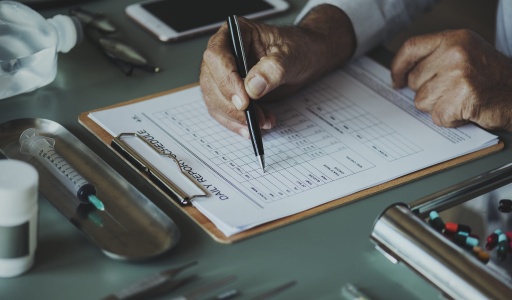
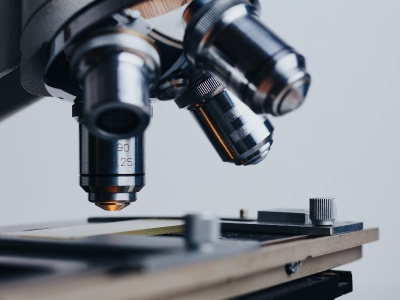
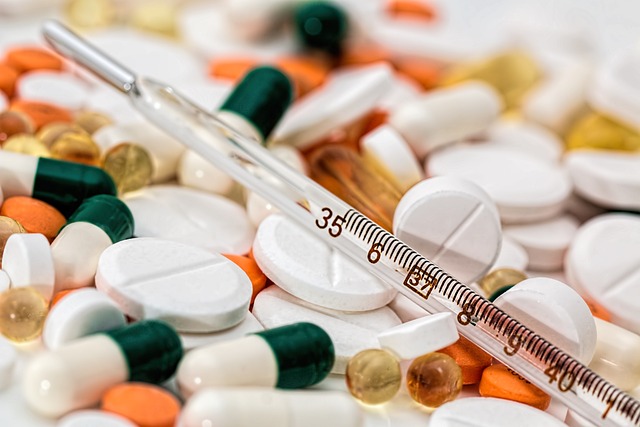
Choosing a cheap, non-specialized provider is a recipe for delays. A strategic partner saves you from costly re-submissions and lost market share by ensuring flawless compliance from the start.
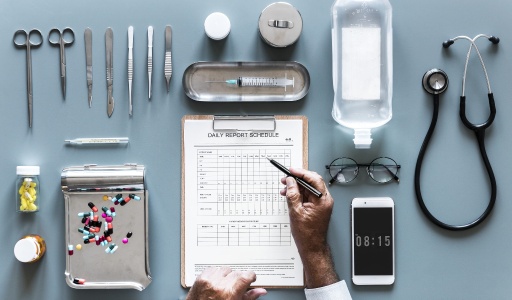
PMDA’s Unique Demands: Beyond the Japanese Language.
Japan’s PMDA stands apart in its approach to documentation. It’s not enough to provide a high-quality Japanese translation; the translation must also adhere to a specific style and terminology that reflects the PMDA’s hands-on, consultative nature. The agency expects documents to be not just accurate but also precisely formatted, with clear tables, figures, and an organized, logical flow that aligns with their internal review processes.
A key factor is the PMDA consulting strategy, which often begins with pre-submission meetings. During these meetings, a company may be required to present a summary of their data in a specific format, such as a Gantt chart, to illustrate their project timeline. This highlights the fact that life science translation services for the PMDA must go beyond a simple word-for-word translation. A skilled partner will understand these unique demands and work with the client to format the translated documents in a way that is immediately recognizable and understandable to a PMDA reviewer. This ensures that the submission is not only linguistically sound but also culturally and professionally appropriate. For a complete breakdown, read our full guide to professional translation.
The «Agency Personality» Profiles.
To navigate the global regulatory landscape effectively, it helps to personify each of the major agencies. Thinking of them in terms of their «personalities» helps to shape your strategy, from your initial data collection to your final submission.
FDA: The Detailed Investigator.
The FDA’s personality is that of a meticulous, no-nonsense investigator. It trusts data above all else and expects submissions to be a comprehensive, well-organized case for a product’s safety and efficacy. The FDA’s questions are direct and its standards are based on a long history of precedent. It is a highly procedural agency that values statistical rigor and expects every claim to be backed by robust, verifiable evidence.
- Approach: Show, don’t tell. Provide every piece of data, cross-reference every claim, and anticipate every possible question.
- Mantra: «The burden of proof is on you.»
- Submission Style: A massive, detailed dossier where every module is complete and every file is in the correct format, such as the eCTD submission requirements for FDA.
EMA: The Consensus Builder.
The EMA operates with the personality of a savvy diplomat. It manages a network of 27 sovereign nations, each with its own language, legal system, and public health priorities. Its goal is to find a consensus that satisfies all parties. The EMA is pragmatic, valuing harmonization and collaboration. It is less about a single-point-of-contact review and more about a coordinated, multi-stakeholder assessment.
- Approach: Harmony and consistency are key. Your submission must not only be scientifically sound but also linguistically and culturally appropriate for every target market.
- Mantra: «One for all, and all for one.»
- Submission Style: A unified scientific dossier with a parallel, meticulously managed process for the EMA linguistic review process for SmPC and patient information in all languages.
PMDA: The Hands-On Partner.
The PMDA’s personality is that of a hands-on, proactive partner. Unlike the FDA or EMA, which can seem more distant, the PMDA invites a high degree of pre-submission consultation. It expects a company to engage with its reviewers early and often, asking for their input and guidance. The PMDA is deeply invested in ensuring products are tailored to the unique needs of the Japanese population.
- Approach: Build a relationship. Treat the PMDA as a guide and collaborator, not an obstacle.
- Mantra: «Let’s work together to get this right the first time.»
- Submission Style: A well-organized dossier that reflects a history of pre-submission dialogue and incorporates the specific feedback and formatting preferences of PMDA reviewers. A strategic PMDA consulting strategy is vital.
The Strategic Approach: Building a Global Submission Plan.
In a world where speed to market is a critical competitive advantage, a sequential, market-by-market approach to regulatory submissions is no longer a viable strategy. The modern solution is a proactive, globally-minded approach built around a single, comprehensive «Masterplan.» This is the core of the «Regulatory Compass» concept.
The Core Dossier Concept: Create Once, Adapt Locally.
The foundation of a global submission strategy is the core dossier. This is a comprehensive, meticulously crafted master document containing all the scientific and technical information about a product, from preclinical data to clinical trial results. This «Golden Thread» of universal data forms the basis for all regional submissions.
The «Golden Thread» includes:
- Core Clinical Study Reports: The raw data and analysis from all clinical trials.
- Chemistry, Manufacturing, and Controls (CMC) Data: Detailed information on how the product is made, purified, and tested.
- Nonclinical Data: Toxicology, pharmacology, and other preclinical study reports.
- The Device Technical File: For devices, this includes design specifications, risk management files, and usability data.
By centralizing these universal data points, a company can ensure consistency and efficiency. The scientific facts about a product do not change from one country to the next. What changes are the regional «branching points»—the specific formatting, administrative, and linguistic requirements of each agency. A savvy team will identify and prepare for these branching points in parallel, ensuring that when the time comes, they can execute a simultaneous global submission with minimal friction.
Branching Points: Where Requirements Diverge.
Successfully navigating the «Regulatory Compass» means anticipating where your path will diverge from the «Golden Thread.» These are the critical points that require specialized attention and often involve a company’s life science translation services partner.
- Clinical Data Requirements: While the core clinical data is the same, how it is presented can differ significantly. For example, the key differences in clinical data requirements between FDA and EMA can influence everything from statistical analysis to the use of real-world evidence. While the FDA has shown flexibility in accepting real-world evidence and surrogate endpoints, the EMA often requires more extensive clinical data and long-term follow-up. This can require additional documentation or analysis to meet both agencies’ standards.
- Linguistic Requirements: As discussed, the need for a certified translation for FDA submission is a fundamental branching point. For the EMA, the branching point is the complex, multilingual linguistic review. For the PMDA, it is the expectation of specific Japanese terminology and formatting.
- Administrative and Legal Requirements: Each agency has its own unique set of application forms, fees, and legal documentation. For example, a Health Canada medical device license application will require different administrative forms and legal declarations than an FDA submission, even for the same product.
By preparing for these branching points ahead of time, a company can avoid a reactive, fire-fighting approach and instead execute a well-orchestrated, parallel submission strategy. A specialized partner in regulatory translation services can manage the complexities of these branching points, allowing the regulatory team to focus on the core scientific data. Learn more about all our life science translation solutions.
The Strategic Approach: Building a Global Submission Plan.
In a world where speed to market is a critical competitive advantage, a sequential, market-by-market approach to regulatory submissions is no longer a viable strategy. The modern solution is a proactive, globally-minded approach built around a single, comprehensive «Masterplan.» This is the core of the «Regulatory Compass» concept.
The Core Dossier Concept: Create Once, Adapt Locally.
The foundation of a global submission strategy is the core dossier. This is a comprehensive, meticulously crafted master document containing all the scientific and technical information about a product, from preclinical data to clinical trial results. This «Golden Thread» of universal data forms the basis for all regional submissions.
The «Golden Thread» includes:
- Core Clinical Study Reports: The raw data and analysis from all clinical trials.
- Chemistry, Manufacturing, and Controls (CMC) Data: Detailed information on how the product is made, purified, and tested.
- Nonclinical Data: Toxicology, pharmacology, and other preclinical study reports.
- The Device Technical File: For devices, this includes design specifications, risk management files, and usability data.
By centralizing these universal data points, a company can ensure consistency and efficiency. The scientific facts about a product do not change from one country to the next. What changes are the regional «branching points»—the specific formatting, administrative, and linguistic requirements of each agency. A savvy team will identify and prepare for these branching points in parallel, ensuring that when the time comes, they can execute a simultaneous global submission with minimal friction.
Your Regulatory Compass for Global Market Access.
We help you navigate the complex world of global medical device regulations and pharmaceuticals.
Stop moving from market to market sequentially. Chart a clear, efficient course with a single, comprehensive strategy for simultaneous global submission to all major agencies.
Partnering with Regulatory & Linguistic Experts.
The complexity of the global regulatory landscape makes it nearly impossible for a single in-house team to manage all aspects of a simultaneous global submission. The most successful companies recognize this and build a network of specialized partners. A PMDA consulting strategy, for example, is not about finding a single consultant but a team that can manage the nuances of the Japanese market, including local legal representation (MAH) and specialized translation.
Similarly, an expert partner in life science translation services is not a simple vendor but a strategic ally. They can help navigate the linguistic branching points, from the EMA linguistic review process for SmPC to the stringent certification required for FDA translation requirements for clinical data. This partnership transforms the linguistic hurdle from a risk into a strategic advantage, ensuring that your documentation is not only accurate but also fully compliant with local regulatory expectations.
Case Study Vignette: The Cost of Underestimation.
A mid-sized medical device company, BioInnovate, developed a novel Class III cardiovascular implant. They had a strong dossier for their FDA PMA, which they had prepared in-house. Believing they could simply translate their PMA documents for other markets, they used a general translation agency for their EU submission. The agency was unfamiliar with the nuances of the EU’s Medical Device Regulation (MDR) and its specific terminology. When the company submitted its Technical File, it was immediately rejected. The EU notified body found multiple inconsistencies and errors, including the mistranslation of a key risk management term that fundamentally changed its meaning. The company had to pull the submission, find a specialized medical device technical file translation partner, and spend an additional eight months and over $200,000 re-working the entire dossier, missing its planned Q1 launch and allowing a competitor to capture a significant portion of the market. This failure highlights the immense hidden cost of regulatory translation services when they are not handled by experts.
Beyond the Big Three: Key Pharmaceutical Regulatory Agencies to Watch.
While the FDA, EMA, and PMDA are the «Big Three» of global regulation, no multinational strategy is complete without considering other key players. These agencies, while perhaps not as globally dominant, are crucial for market access in their respective regions and each presents its own unique set of requirements and opportunities.
The UK’s MHRA: A Post-Brexit Powerhouse.
Following its departure from the European Union, the UK’s Medicines and Healthcare products Regulatory Agency (MHRA) has been rapidly developing its own independent regulatory framework. While the UK still accepts CE-marked devices for a transitional period, manufacturers must now comply with the UK’s new regulations, including a new and highly specific system for post-market surveillance (PMS). As of June 2025, new PMS requirements for devices, even those with a CE Mark, must be adhered to.
For global medical device regulations, this is a critical branching point. Companies must now segment their PMS data to provide the MHRA with specific information on their devices in the UK market. This requires manufacturers to be prepared to submit structured reports and data on short notice. A UK-specific regulatory and linguistic strategy is now a necessity, as the MHRA is quickly cementing its status as an independent and highly capable pharmaceutical regulatory agencies on the global stage.
Australia’s TGA: Leveraging Global Approvals.
For companies with existing approvals in major markets, Australia’s Therapeutic Goods Administration (TGA) offers a streamlined pathway. The TGA recognizes approvals from comparable overseas regulators like the FDA and the EMA. This means a company can leverage its existing dossier to seek inclusion on the Australian Register of Therapeutic Goods (ARTG).
However, even with this benefit, the process is not without its unique requirements. For a foreign company, the first step is to appoint an Australian Sponsor, a local representative who will act as the liaison with the TGA. This sponsor is responsible for submitting the application and for all post-market activities, including adverse event reporting. While the TGA’s process is often seen as more efficient, foreign companies still require expert assistance to navigate local nuances and ensure all administrative and documentation requirements are met. The need for a local sponsor is a unique branching point in the regulatory translation services process, as all communication with the agency must go through this representative. For a more detailed overview, see our guide to life science translation services.
China’s NMPA: A Rising Powerhouse.
China’s National Medical Products Administration (NMPA) has rapidly evolved from a regional authority into a major global force. In recent years, it has undergone significant reforms aimed at streamlining the drug and device approval process to encourage innovation and attract foreign investment. However, its regulations can still be complex and require a localized strategy.
For devices, the China NMPA medical device registration process is highly stratified based on risk classification. The NMPA has also introduced new rules for innovative medical devices and is exploring the use of real-world data and artificial intelligence to accelerate reviews. For foreign companies, having a local regulatory agent is a mandatory requirement. This highlights the need for deep, in-country expertise to navigate a system that is still developing and often requires a «hands-on» approach not unlike the PMDA consulting strategy.
Health Canada (HC): A Gateway to North America.
As Canada’s national regulatory body, Health Canada (HC) operates under the Health Canada medical device license application framework and the Food and Drugs Act. Its approach is often seen as a blend of the FDA’s detailed scrutiny and the EMA’s focus on international harmonization. For both pharmaceutical regulatory agencies and device manufacturers, a key consideration for Health Canada is its bilingual nature. All final product information, including labels, packaging, and instructions for use, must be provided in both English and French to meet the country’s official language requirements.
A Health Canada medical device license application for a Class II, III, or IV device requires a thorough submission that includes a description of the device, its intended use, and evidence of its safety and effectiveness. A crucial aspect of this process is the need to submit a quality management system certificate, such as ISO 13485. While it may share some similarities with an FDA submission, a separate, specific dossier is often required to meet Canada’s unique documentation and language standards.
Brazil’s ANVISA: A Leader in Latin America.
As the largest market in Latin America, Brazil’s Agência Nacional de Vigilância Sanitária (ANVISA) is a critical regulatory body. The agency has been modernizing its framework, and it places a strong emphasis on Good Manufacturing Practices (GMP) and Good Distribution and/or Storage Practices (GDP) certifications. The process often involves significant documentation in Portuguese, and the agency requires that a company appoint a local regulatory agent or representative. Navigating Brazil’s unique requirements requires a specialized partner with a deep understanding of local laws and the necessary language expertise.
Charting the Course: The Pharmaceutical vs. Medical Device Regulatory Maze.
While both pharmaceuticals and medical devices fall under the purview of agencies like the FDA, EMA, and PMDA, their regulatory journeys are fundamentally different. Understanding this distinction is crucial for any company aiming for efficiency, as a «one-size-fits-all» approach to simultaneous global submission will inevitably fail. This section provides a detailed breakdown of these two pathways, highlighting their unique requirements and the different strategies needed to succeed.
The Pharmaceutical Path: The Common Technical Dossier.
For pharmaceuticals, the regulatory world has largely converged on a harmonized format: the Common Technical Document (CTD). Its electronic version, the eCTD, is the mandatory standard for most submissions to the FDA, EMA, and PMDA, making it a «golden thread» of a different kind—a universal framework for organizing data. The CTD is divided into five modules, each with a specific purpose.
Module 1: Administrative and Prescribing Information This module is region-specific and contains administrative documents like application forms, investigator qualifications, and proposed labels. This is a key «branching point» where a company must adapt its submission to meet the local requirements of the FDA, EMA, or another agency. For instance, the eCTD submission requirements for FDA mandate specific forms (e.g., Form 356h) that are not used by the EMA.
Module 2: Summaries Module 2 is the most strategic section. It is where you provide a concise, readable overview of the nonclinical and clinical data contained in the later modules. It’s the reviewer’s first stop to understand your product. It contains the Quality Overall Summary, Nonclinical Overview, and Clinical Overview. A well-written Module 2 can streamline the review process by guiding the reviewer through your data and highlighting key findings.
Module 3: Quality Module 3 is dedicated to the Chemistry, Manufacturing, and Controls (CMC) of your product. This includes detailed information on the manufacturing process, the components of the drug substance and drug product, and all quality control measures. This module is vital for demonstrating that your product is safe and effective. It’s also a high-risk area for errors, as a single deviation in a manufacturing process can lead to a submission hold.
Module 4: Nonclinical Study Reports This module contains the results of all pharmacology, pharmacokinetics, and toxicology studies conducted in animals or in vitro. It provides the foundational evidence of a product’s safety before it is tested in humans.
Module 5: Clinical Study Reports Module 5 contains the complete clinical study reports, including protocols, statistical analysis plans, and the raw data from every clinical trial. For foreign clinical data, the FDA translation requirements for clinical data are particularly stringent, as the integrity and accuracy of the patient information are paramount.
The Medical Device Path: From Substantial Equivalence to Clinical Data.
Unlike the largely harmonized pharmaceutical pathway, global medical device regulations are more decentralized and often depend on the device’s risk classification. A device’s journey can be fundamentally altered by its class, the existence of a similar product on the market, and the target country’s specific regulatory framework. This is a critical distinction that manufacturers must understand from the outset.
FDA: The 510(k) vs. PMA Dilemma.
In the United States, a medical device company typically faces a primary decision: the 510(k) pathway or the Premarket Approval (PMA) pathway.
- 510(k) Premarket Notification: This is the most common pathway and applies to most Class I and II devices. Its core purpose is to demonstrate «substantial equivalence» to a legally marketed predicate device. This means a manufacturer must prove its new device is as safe and effective as an existing product already on the market. The 510(k) process is less rigorous, less expensive, and has a shorter review timeline (typically 90 days), making it ideal for devices that are incremental innovations on existing technologies.
- Premarket Approval (PMA): The PMA is the most stringent review pathway and is reserved for high-risk, Class III devices that are life-sustaining, life-supporting, or pose a significant risk of injury or illness. Unlike the 510(k), a PMA requires robust clinical trial data to prove the device’s safety and effectiveness. The process is lengthy, costly, and requires a significant investment in clinical research.
EMA: The New MDR and IVDR.
The EU has undergone a radical shift from its previous directives to the new Medical Device Regulation (MDR) and In Vitro Diagnostic Regulation (IVDR). The goal was to strengthen patient safety and improve traceability. The new regulations have significantly increased the burden on manufacturers.
- Technical File / Design Dossier: For most devices, a manufacturer must create a comprehensive Technical File that documents the device’s design, manufacturing process, risk analysis, and clinical evaluation. For higher-risk devices, this is often called a Design Dossier. The medical device technical file translation of this document is a critical step for submissions, as it must be done with precision and attention to detail.
- Notified Bodies: Under the new MDR, many devices that were previously self-certified now require review by a Notified Body, a private organization designated by an EU member state. This has led to longer review times and greater scrutiny, making the process more aligned with a PMA submission.
PMDA: The Hybrid Model.
Japan’s PMDA operates a hybrid model for medical devices, with three main pathways that mirror the complexity of its pharmaceutical review.
- Todokede (Notification): For low-risk Class I devices, a simple pre-market notification is submitted to the PMDA.
- Ninsho (Certification): For certain Class II and III devices with established certification standards, a pre-market certification is filed with a private Certification Accreditation Body (CAB), similar to an EU Notified Body.
- Shonin (Approval): For all Class IV devices and those Class II and III devices without a certification standard, a full pre-market approval application must be submitted to the PMDA, a process that is as rigorous as an FDA PMA.
Navigating these pathways requires deep, in-country knowledge and a specialized PMDA consulting strategy.
Move beyond the reactive mindset with a single, synchronized global plan.
Your regulatory journey is a marathon, not a sprint. We help you plan every step to ensure efficiency and a faster path to global market.

The Role of Technology: A New Compass for Regulatory Submissions.
As regulatory requirements become more complex, technology has emerged as a powerful tool to streamline the submission process, reduce human error, and lower the cost of regulatory translation services. A modern, strategic approach to compliance is no longer just about filling out forms; it’s about leveraging technology to create a more efficient and accurate workflow.
The Power of a Centralized Translation Management System (TMS).
A centralized translation management system is a platform that streamlines and automates every aspect of the translation process. For a global life sciences company, this is not a luxury but a strategic necessity. A TMS provides a single source of truth for all content, from clinical trial protocols to product labeling, and ensures consistency and quality across all languages.
Key benefits of a TMS include:
- Consistency and Terminology Management: A TMS uses a Regulatory Terminology Database—a centralized, living glossary of approved terms for each regulatory body. This ensures that a phrase like «adverse event» is translated the same way for the FDA, EMA, and PMDA, which is critical for regulatory compliance and safety reporting.
- Efficiency and Cost Reduction: A TMS uses translation memory, a database that stores every previously translated segment. When a similar or identical phrase appears in a new document, the system automatically suggests the translation. This significantly reduces the need to re-translate content, dramatically lowering the cost of regulatory translation services over time.
- Automated Workflows: A TMS automates the entire translation workflow, from file submission to in-country review and final delivery. This reduces administrative burden, eliminates human error, and ensures that projects are delivered on time, allowing teams to meet strict regulatory deadlines for both pharmaceuticals and medical devices.
AI and the Future of Regulatory Compliance.
The latest advancements in technology, particularly in artificial intelligence (AI) and machine learning (ML), are revolutionizing regulatory affairs. AI-powered tools are being used to streamline everything from document drafting to compliance monitoring. For example, AI can analyze past FDA queries (known as Health Authority Queries, or HAQs) to predict likely questions for a given submission, allowing regulatory teams to proactively address concerns and shorten review cycles.
These tools are not meant to replace human expertise but to enhance it. They free up regulatory affairs professionals and expert translators to focus on high-value, strategic tasks, rather than repetitive administrative work. The combination of human expertise and advanced technology is the future of regulatory translation services and will be a key differentiator for companies seeking to gain a competitive advantage in a complex and ever-changing global market.
The Strategic Approach: The Global Submission Masterplan.
Moving a pharmaceutical or medical device product from a concept to a global market is no longer a sequential process. The most successful life science companies employ a simultaneous global submission masterplan, a highly synchronized strategy that prepares a product for multiple markets at once. This masterplan is built on two core principles: creating a single, comprehensive dossier and preparing for regional divergences. This section provides a blueprint for executing such a strategy.
The Core Dossier: The «Golden Thread».
The foundation of a global submission strategy is the core dossier, a single, meticulously crafted master document containing all the scientific and technical information about a product. This «Golden Thread» of universal data forms the basis for all regional submissions, ensuring consistency and accuracy across all markets. By centralizing this information, a company can avoid the costly and error-prone process of recreating documents from scratch for each new regulatory body.
For a pharmaceutical product, the «Golden Thread» is primarily composed of the core data from the five modules of the Common Technical Document (CTD):
- Nonclinical Data: All animal and in vitro studies on the product’s safety and pharmacology.
- Clinical Data: The full, anonymized data from all human clinical trials, including the raw data and final study reports. This is a crucial element that must be meticulously planned for professional translation services for clinical trials.
- Chemistry, Manufacturing, and Controls (CMC): Detailed information on how the drug substance and product are manufactured, purified, and tested.
For a medical device, the «Golden Thread» is the comprehensive medical device technical file translation (for EU submission) or the core data that underpins a PMA or 510(k) submission. This includes:
- Design Specifications: Detailed blueprints and specifications of the device.
- Risk Management File: A comprehensive document detailing all known and potential risks and the mitigation strategies in place.
- Usability Engineering File: Data demonstrating that the device can be used safely and effectively.
- Biocompatibility and Sterilization Data: The results of all tests to ensure the device is safe for human contact and is properly sterilized.
Case Study Vignette: Success in Parallel.
A mid-sized biotech firm, GeneSys, developed a groundbreaking new oncology drug. Instead of following the traditional sequential submission model (FDA first, then EMA), they decided to pursue a simultaneous global submission to the FDA and EMA. Their strategy hinged on a centralized «Golden Thread» dossier and a partnership with a specialized life science translation services provider.
They meticulously prepared a single, core clinical trial report, a single CMC module, and a single set of nonclinical documents. As they prepared for the parallel submissions, the regulatory team focused on the regional «branching points,» such as the region-specific Module 1 of the eCTD. Their translation partner managed the linguistic aspects, including the certified translations for FDA and the initial draft of the SmPC for the EMA. The synchronized effort allowed them to submit both applications within a one-week window of each other. The result? They received FDA approval only three weeks before their EMA approval, allowing them to launch their product in the US and EU nearly simultaneously, beating out a major competitor by over a year. For a complete overview, explore our translation and localization solutions.
The Regulatory Triage Quiz: Are You Ready?.
To help you assess your own readiness for a global submission, we have developed the «Regulatory Triage Quiz.» This short, engaging quiz is designed to help you identify potential gaps in your strategy and highlight the areas where you might need expert support.
Quiz Question 1: Your clinical data comes from a Phase III trial conducted in six different countries, including non-English speaking locations. For your FDA translation requirements for clinical data, what is your biggest concern?
a) Getting the translations done in time for the submission deadline. b) Ensuring the patient-reported outcome (PRO) measures are accurately translated and culturally adapted. c) Ensuring a certified translation statement accompanies every document. d) Deciding whether to translate all the raw data or just the final study reports.
(Correct Answer: c) While all are concerns, the most critical and non-negotiable requirement for the FDA is a certified translation statement to ensure the integrity of the data.)
Quiz Question 2: You are preparing a medical device for submission in the EU. Your key marketing messages are ready in English. What is the most critical hurdle to address for your EMA submission translation?
a) Getting a direct, word-for-word translation for all 24 languages. b) Ensuring the translation is accurate and aligns with the EMA’s Quality Review of Documents (QRD) template. c) Deciding which languages to translate the label and instructions for use into. d) Finding a single translator who can handle all 24 languages.
(Correct Answer: b) The EMA’s linguistic review process requires a high degree of fidelity to the QRD template, which is a key part of the EMA submission process.)
Quiz Question 3: You have an existing medical device approved by the FDA via a 510(k). You now want to submit it to the PMDA in Japan. What is the first key step in your PMDA consulting strategy?
a) Hire a Japanese translation company to translate all your 510(k) documents. b) Find a local Japanese regulatory representative (MAH). c) Submit a pre-submission consultation request to the PMDA. d) Begin preparing your clinical trial data for Japanese approval.
(Correct Answer: c) The PMDA’s «Hands-on Partner» personality means that a pre-submission consultation is the expected and most efficient first step to ensure your documentation and strategy align with the agency’s expectations.)
Interactive Regulatory Pathway Tool (Concept).
Imagine a tool that provides a high-level, interactive roadmap for your specific product and target markets. Here is a conceptual description of how such a tool would function:
Select Your Product:
- Pharmaceutical (New Drug Application, Biologics License Application)
- Medical Device (PMA, 510(k))
Select Your Target Markets:
- USA (FDA)
- Europe (EMA)
- Japan (PMDA)
- Canada (Health Canada)
- Australia (TGA)
The Tool Generates a Customized Checklist:
Your Pathway: Medical Device (PMA) in the USA and EU
- USA – FDA (PMA):
- Phase 1: Pre-Submission Dialogue.
- Phase 2: PMA Application Submission.
- Phase 3: FDA Review.
- Required Documents: You will need to prepare a full PMA dossier with extensive clinical data. Remember the FDA translation requirements for any foreign clinical data.
- Europe – EMA (MDR):
- Phase 1: Notified Body Selection.
- Phase 2: Technical File Preparation.
- Phase 3: Notified Body Review.
- Required Documents: Prepare a comprehensive Technical File that meets the requirements of the MDR. Remember the strict medical device technical file translation standards.
This tool transforms the article from a static document into a dynamic resource, empowering professionals to take the first steps toward a well-defined regulatory strategy.
The Cost of Regulatory Translation: A Strategic Investment.
In the previous batch, we touched on the hidden costs of poor translation. Here, we will emphasize that viewing regulatory translation services as a necessary expense rather than a strategic investment is a costly mistake.
A company that views translation as a simple commodity will often choose the cheapest option, leading to errors, delays, and a reactive, fire-fighting approach to regulatory hurdles.
A company that views translation as a strategic investment will partner with a specialized provider who understands the nuances of global medical device regulations and the strict requirements of pharmaceutical regulatory agencies. This proactive partnership allows them to create a Regulatory Terminology Database that ensures consistency across all documents, from preclinical reports to final product labels. This investment saves time and money in the long run by reducing the need for costly re-submissions and preventing delays that can be worth millions of dollars in lost market share. The cost of regulatory translation services is far less than the cost of a delayed or failed submission.
FDA vs. EMA: A Tale of Two Pathways.
Navigate the medical device vs pharmaceutical regulations with expert guidance.

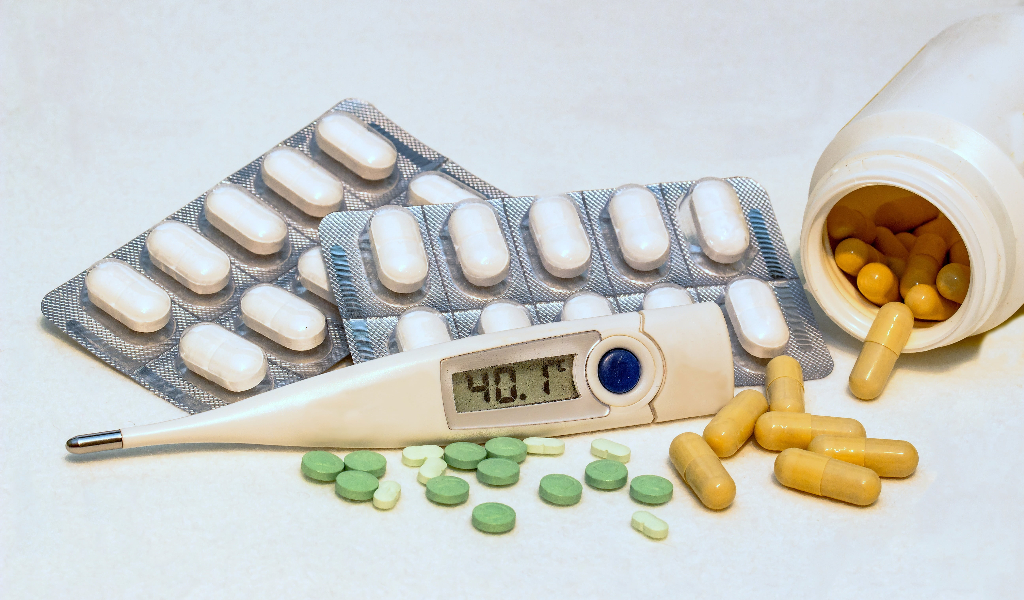
The Health Canada medical device license application framework and beyond.
The Strategic Pitfalls: Learning from Regulatory Failure.
For every successful product launch, there is a litany of failures. While some are due to scientific or clinical reasons, a surprising number of regulatory rejections and costly delays are a direct result of poor strategic planning and preventable errors. Understanding these failures is just as crucial as studying the successes, as they provide invaluable lessons on the importance of a proactive approach.
Case Study Vignette: A Cautionary Tale of Data Integrity.
A medium-sized pharmaceutical company, Medipharm, submitted a New Drug Application (NDA) for a promising new antibiotic. The application was supported by a large-scale clinical trial with sites in several countries. The FDA conducted a pre-approval inspection (PAI) of a key clinical site, which was located in a non-English speaking country.
During the inspection, the FDA investigator found discrepancies between the source documents and the translated data in the electronic submission. A key finding was that several patient records had been improperly translated, leading to an inaccurate representation of an adverse event. The FDA also found evidence of missing and manipulated raw data, a severe violation of Good Clinical Practice (GCP). The FDA issued a Complete Response Letter (CRL), citing significant deficiencies in data integrity and clinical site non-compliance.
- The Regulatory Consequence: The CRL stated that the FDA could not approve the NDA in its current form. It requested that the company re-assay the samples, repeat the study, or conduct a third-party audit. The company’s application was delayed by over two years as it was forced to conduct a costly, time-consuming investigation. The company’s stock price dropped by 40%, and a competitor seized the market.
- The Lesson Learned: This failure highlights the immense importance of a robust quality management system and a proactive approach to professional translation services for clinical trials. The company had failed to implement adequate oversight, and its translation vendor had not adhered to the strict standards of certified translation, leading to a breakdown in data integrity. This case demonstrates that the FDA, in its role as a «Detailed Investigator,» will not hesitate to halt a submission if it finds even a single instance of non-compliance that compromises data quality. To learn more, read our full article on professional translation services.
EMA Rejection: A Failure of Linguistic Harmony.
A well-funded biotech company, BioEurope, sought marketing authorization for a new therapeutic via the EMA’s centralized procedure. The company’s dossier was scientifically sound, and it received a positive opinion from the CHMP. The company then began the final phase of the process, the EMA linguistic review process for SmPC, where its EMA submission translation into 24 EU languages was to be finalized.
Believing the scientific review was the only real hurdle, the company used a general translation provider and did not involve a specialized regulatory partner. When the translations were submitted, several national authorities raised «major objections» related to linguistic inconsistencies. For example, in one language, the term for «adverse reaction» was mistranslated, leading to a change in the meaning of a key safety warning. In another, the dosage instructions were rendered in a confusing manner, raising concerns about patient safety. The EMA ultimately issued a «negative opinion» and rejected the application due to the unresolved linguistic issues.
- The Regulatory Consequence: The application was rejected, forcing the company to restart the process and address all the linguistic and regulatory concerns. The company faced a significant delay, which allowed a competitor to enter the market first. The reputational damage was immense, as it had publicly announced its confidence in an imminent approval.
- The Lesson Learned: The EMA’s personality as a «Consensus Builder» is not just a metaphor; it’s a regulatory reality. A company must understand that the linguistic review is a critical part of the regulatory process and that each member state has the power to reject an application. This failure underscores the need for a specialized partner in regulatory translation services who understands the nuances of the QRD templates and the linguistic expectations of each EU member state.
PMDA Rejection: Underestimating the «Hands-On Partner».
A medical device company, InnovaMed, sought to register a Class III device with Japan’s PMDA. The company was confident, as it had successfully navigated the FDA’s PMA process and believed a simple translation of its US dossier would suffice. The company did not engage in pre-submission consultations with the PMDA and submitted its application without a local regulatory representative (MAH).
The PMDA’s review team was surprised by the lack of pre-submission dialogue and found the application to be lacking in several key areas. The dossier, a direct translation of the US PMA, did not address the PMDA’s specific expectations for data formatting and clinical study design for the Japanese population. The agency issued a rejection, stating that the company had not addressed ethnic factors and had failed to provide the necessary data to demonstrate the device’s safety and efficacy in a Japanese context.
- The Regulatory Consequence: The company’s application was rejected, and it was forced to conduct an entirely new clinical trial in Japan. The project was delayed by several years and cost the company tens of millions of dollars.
- The Lesson Learned: The PMDA’s personality as a «Hands-On Partner» is not optional; it is the cornerstone of a successful PMDA consulting strategy. This failure illustrates that a global submission is not simply a matter of translation but a strategic exercise in cultural and regulatory adaptation. By underestimating the PMDA’s expectations for partnership and in-country data, the company made a fatal error that could have been avoided with early and frequent consultation.
Conclusion: Your Path to Global Compliance.
The global regulatory landscape is a complex and ever-changing environment. It is a world of pharmaceutical regulatory agencies and global medical device regulations that demand a strategic, proactive, and globally-minded approach. The outdated model of sequential, market-by-market submissions is no longer a viable path to success. The most efficient and successful companies are the ones that view their regulatory journey through the lens of a «Regulatory Compass», charting a course that anticipates challenges and leverages expertise to overcome them.
The journey begins with a clear understanding of the «agency personalities» and a recognition that each has its own unique set of rules and expectations. It is a world where a meticulous «Detailed Investigator» (FDA) will scrutinize every data point, a collaborative «Consensus Builder» (EMA) will demand linguistic harmony, and a hands-on «Partner» (PMDA) will expect pre-submission dialogue.
The «Golden Thread» of a central core dossier is the foundation of a proactive strategy. By creating a single, comprehensive source of truth for all scientific and technical data, companies can streamline their submissions and ensure consistency. However, this is only half the battle. The other half lies in expertly navigating the «branching points»—the regional and linguistic hurdles that can make or break a submission.
The path to simultaneous global submission is paved with strategic partnerships. From life science translation services that ensure linguistic precision to specialized regulatory translation services that manage the complexities of a multilingual dossier, these partners are not just vendors; they are critical allies in the quest for global market access. Discover the full scope of our translation services.
Your Pathway: A Tale of Two Pathways: Navigating Pharmaceuticals vs. Medical Devices.
This visual conceptualization simplifies the complexities of the two pathways, providing a high-level overview of the distinct challenges each product type presents.
- Pharmaceutical Path: Focuses on the eCTD, clinical trial applications (IND/IMPD), and marketing authorization applications (NDA/MAA). It is a journey of meticulous data management and adherence to a standardized framework.
- Medical Device Path: Focuses on classification (Class I, II, III vs. IIa, IIb, III), pathways (510(k), PMA vs. Technical File, Design Dossier), and unique standards (ISO 13485, MDR/IVDR). It is a journey of risk assessment, technical file preparation, and a deep understanding of product classification.
Ultimately, your success in this global arena hinges on a strategic mindset. It is about anticipating challenges, leveraging technology, and recognizing that your regulatory translation services partner is a key component of your success.
I can now begin writing the seventh and final batch of the article. This section will complete the conclusion, reiterate the core concepts, and provide a strong call-to-action, leveraging the information from the final search results to ensure the forward-looking content is current and relevant.
The Future of Regulatory Compliance: Where Technology Meets Strategy.
The regulatory landscape is on the cusp of a major transformation, driven by technology and a push for greater global harmonization. Forward-thinking companies are already embracing these trends to gain a competitive edge.
- From Documents to Data: The traditional, document-driven approach to submissions is evolving. Agencies like the FDA and EMA are increasingly encouraging the use of structured, machine-readable data. This shift will allow for faster, more efficient reviews and a new era of data-driven decision-making. The future lies in Regulatory Information Management (RIM) systems that can serve as a single source of truth for all regulatory data, from product registrations to submission dossiers and correspondence.
- The Rise of AI and Automation: The latest advancements in AI-powered tools are revolutionizing every stage of the regulatory journey. AI is being used to automate document analysis, identify potential compliance risks, and even predict likely questions from health authorities. This allows regulatory professionals to focus on strategic tasks rather than administrative ones.
- Real-World Evidence (RWE) and Digital Health: Regulatory bodies are increasingly open to the use of RWE to support product approvals. This data, collected from sources like electronic health records and wearable devices, can provide powerful insights into a product’s performance in a real-world setting. A strategic approach to collecting and presenting RWE will be a key differentiator for both pharmaceutical regulatory agencies and global medical device regulations.
- Global Harmonization Continues: Agencies are working more closely than ever. Collaborative initiatives like the FDA-EMA-PMDA Good Clinical Practice (GCP) pilot program demonstrate a growing willingness to share information and streamline processes. This means that a well-prepared dossier, built on the «Golden Thread» principle, will become even more valuable in the years to come.
H2: Final Self-Assessment: Is Your Compass Aligned?
Take a moment to review the core questions we’ve explored throughout this article. Your answers will reveal whether your organization is ready to navigate the global regulatory landscape with confidence.
- Do you have a «Golden Thread» dossier?
- Yes: You have a solid foundation for a simultaneous global submission.
- No: You are at risk of costly rework and inconsistent data.
- Are you preparing for «Branching Points»?
- Yes: You are anticipating the unique requirements of each market, from the medical device technical file translation for the EU to the specific administrative forms for the FDA.
- No: You are at risk of rejection due to a lack of strategic planning.
- Are you leveraging expert partners?
- Yes: You understand that a specialist in life science translation services is a strategic ally, not just a vendor, and you have a clear PMDA consulting strategy in place for Japan.
- No: You are underestimating the linguistic hurdle and exposing your organization to unnecessary risk.
Ultimately, your success in this global arena hinges on a strategic mindset. It is about anticipating challenges, leveraging technology, and recognizing that your regulatory translation services partner is a key component of your success.
The journey is complex, but it is not a maze without a map. By understanding the agencies, preparing a single master dossier, and leveraging the right expertise, you can chart a clear course to global market access.
Your Path Forward Starts Now.
Are you ready to move beyond the complexities and take control of your global regulatory journey? Our team of regulatory and linguistic experts is here to help you build your custom «Regulatory Compass». Download our comprehensive checklist for a successful simultaneous global submission or contact us today for a free consultation to discuss how we can help you navigate the future of global medical device regulations and pharmaceutical regulatory agencies.
How professional translation services make or break a global submission.
Don’t let a mistranslated word cause a costly delay. Our certified FDA translation requirements and expertise turn a major hurdle into a competitive advantage.
Got Questions? We Have Answers.
We understand the challenges of global submissions. Here are answers to some of the most common questions we receive from clients.
Ready to Navigate the Complexities of Global Regulatory Submissions?
Contact our team of experts to discuss your specific needs and learn how our strategic approach can save you time and money.


